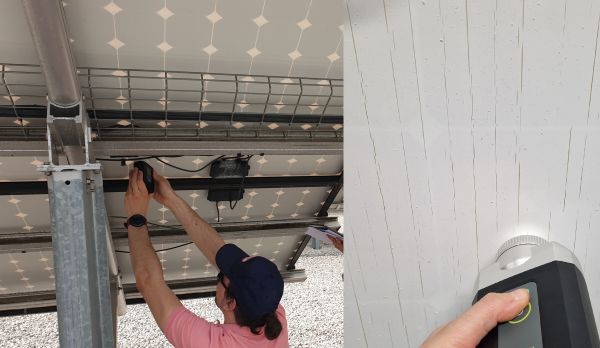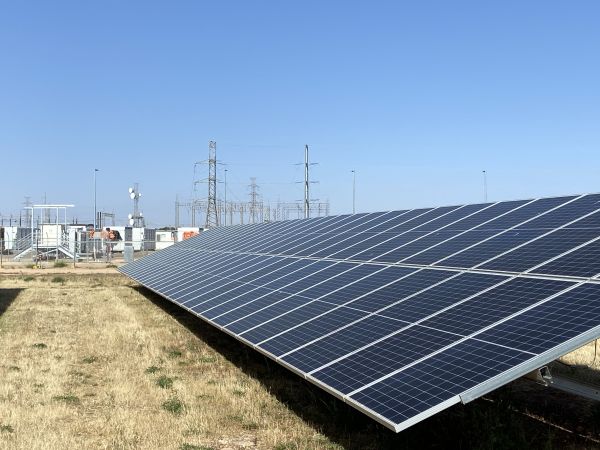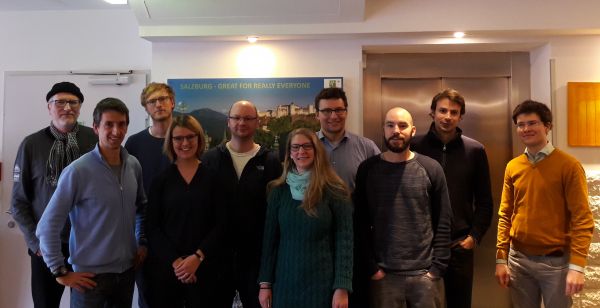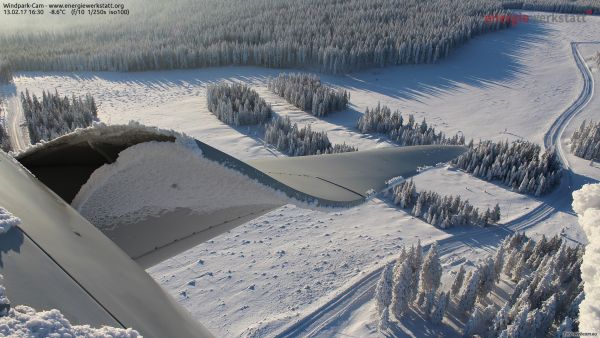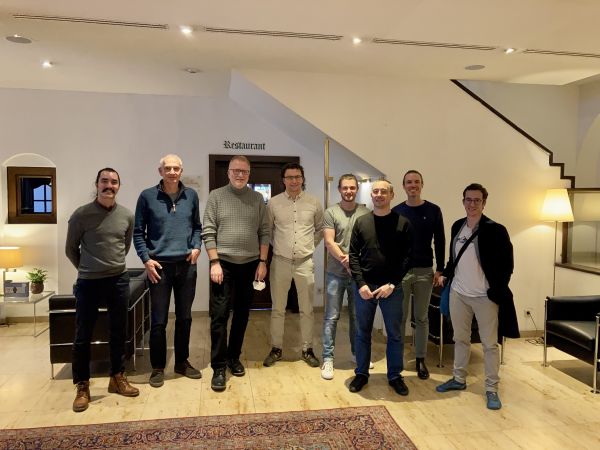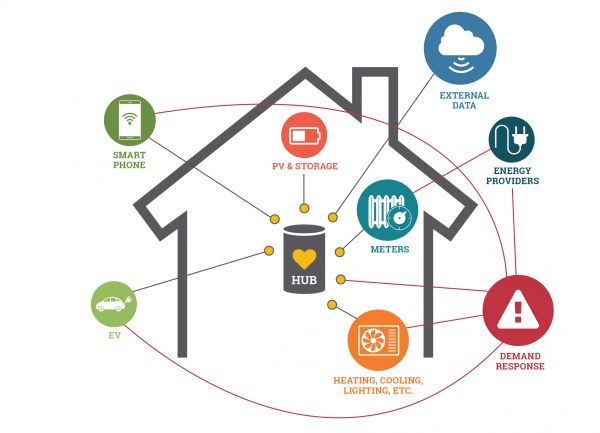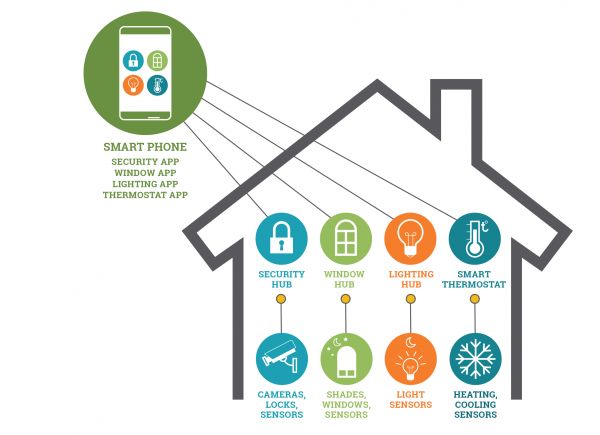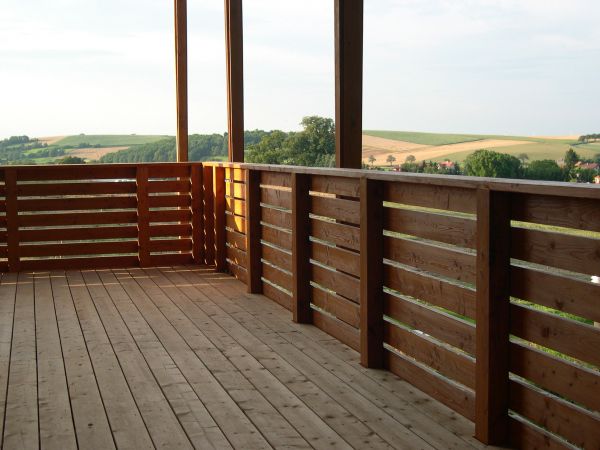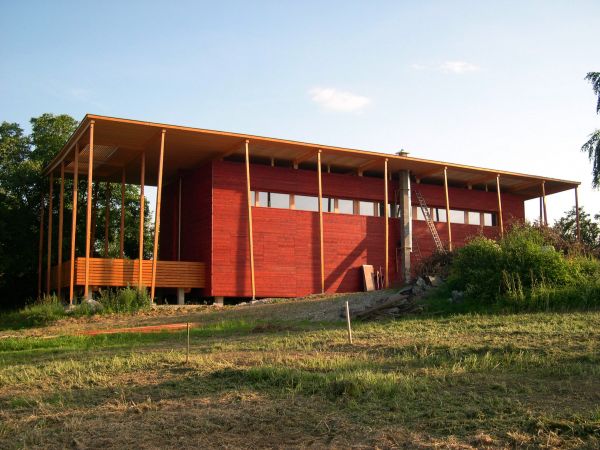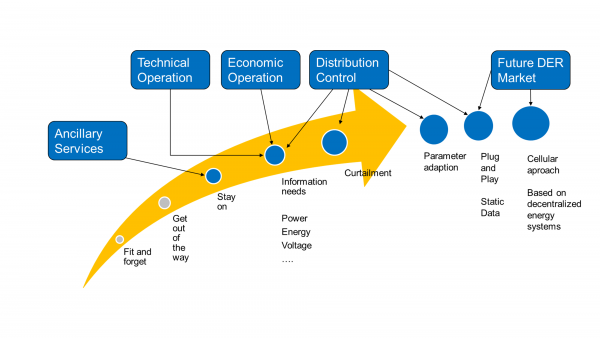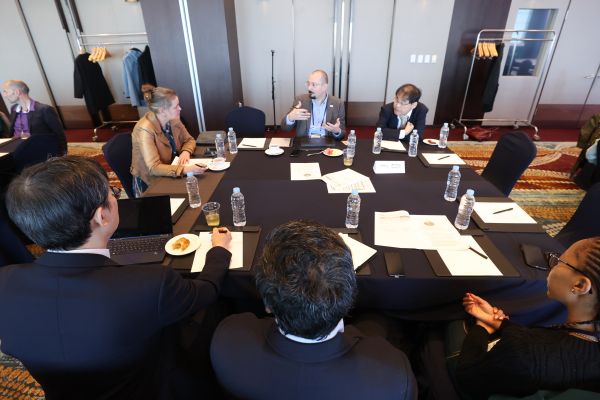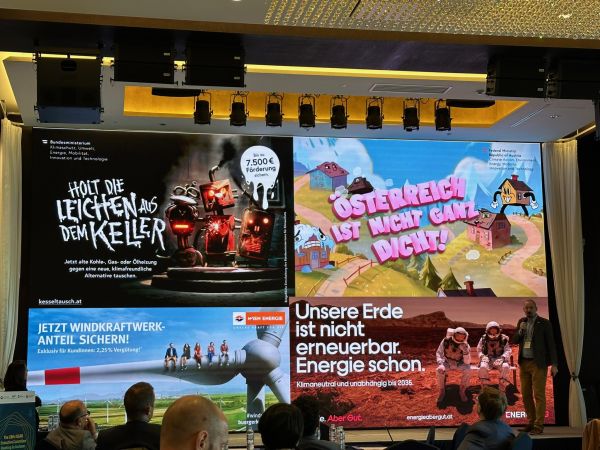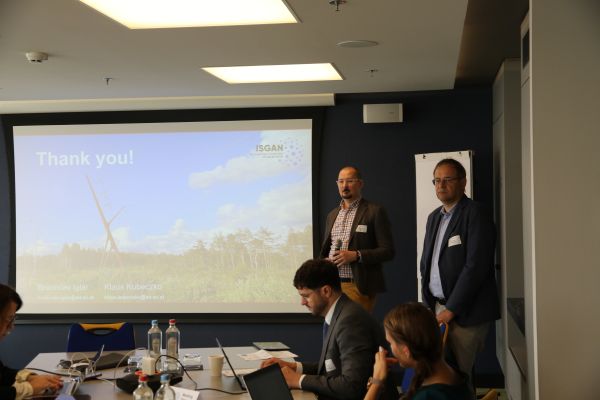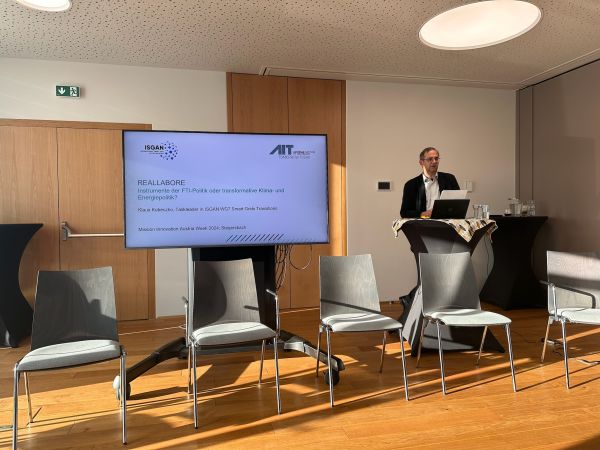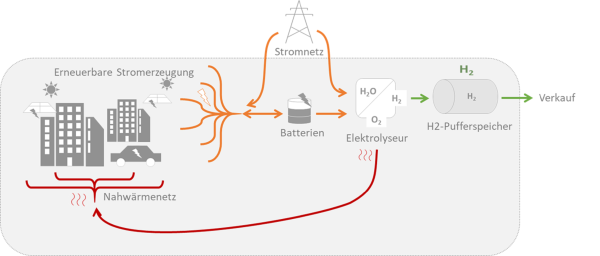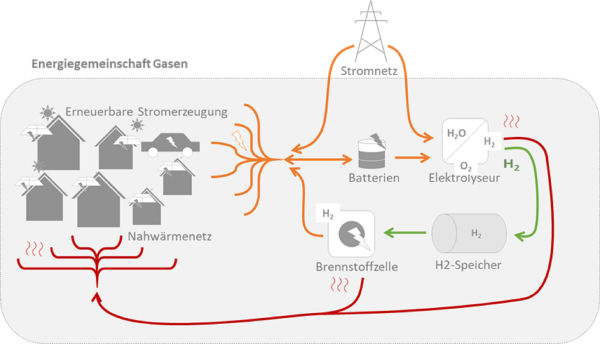Project Image Pool
There are 397 results.
Terms of use: The pictures on this site originate from the projects in the frame of the programmes City of Tomorrow, Building of Tomorrow and the IEA Research Cooperation. They may be used credited for non-commercial purposes under the Creative Commons License Attribution-NonCommercial (CC BY-NC).
On-site inspection of photovoltaic modules
Left hand side: Hand-held devices can be used to get insight in polymer materials composition and degradation processes. Right hand side: Module backsheet with multiple parallel cracks of the outer layer. See Report T13-24:2021 „Qualification of Photovoltaic (PV) Power Plants using Mobile Test Equipment“ and Report T13-13:2021 "Designing New Materials for Photovoltaics: Opportunities for Lowering Cost and Increasing Performance through Advanced Material Innovations". Download-Link: https://iea-pvps.org/research-tasks/performance-operation-and-reliability-of-photovoltaic-systems/
Copyright: Gernot Oreski (PCCL)
IEA-PVPS Task Grid Integration workshop in Tokyo, Japan
International Experts from Task 14 and Experts from the Japanese electricity sector and research attending the NEDO/Task 14 workshop in November 2022
Copyright: IEA-PVPS Task 14 - NEDO
Tailem Bend Solar Power Farm, South Australia
187 MW Solar Power Farm in Tailum Bend, South Australia
Copyright: AIT Austrian Institute of Technology
Poject meeting Salzburg
Participants in the Task 19 Workshop on risk analysis and risk assessment which was held in January 2018 in Salzburg.
Copyright: Energiewerkstatt Verein
Rotor blade icing
Scenic view of a rotor blade with light snow and ice accumulation in a winterly setting.
Copyright: Energiewerkstatt Verein
International workshop on ice fall risk assessment in Salzburg
On November 4th and 5th 2021, the Energiewerkstatt invited to a workshop on ice fall risk assessment in the framework of Task 19 of the IEA research cooperation. The aim was to revise the international recommendations on ice fall and ice throw risk assessment issued on behalf of the IEA. The expert group led by Energiewerkstatt published the new edition of the document in spring 2022.
Copyright: Claas Rittinghaus
Template of a universal ice fall warning sign
In course of revising the IEA Wind TCP Ice Fall Recommendations the template of a universal ice fall warning sign was designed.
Copyright: Hector Rodriguez
Smart home services
Smart homes can deliver a range of services and benefits to households, such as energy management (energy efficiency), demand response (contribute to regulating energy demand), electricity generation, storage and delivery to the grid, comfort, security, entertainment, household management (planning, internet shopping), specialized services (wellness or health management) and assisted living.
Copyright: IEA 4E Electronic Devices and Networks Annex - EDNA (https://edna.iea-4e.org/)
Smart home with multiple systems
Smart home with multiple smart systems and interfaces, for example, smart meter display, lighting control display, heating and cooling control display, window status display etc. (This raises concerns about interoperability and acceptance by users).
Copyright: IEA 4E Electronic Devices and Networks Annex - EDNA (https://edna.iea-4e.org/)
Development path of photovoltaics in the future Smart Grid
As part of the international cooperation in Task 14, an overview of current demonstration projects of communication and control concepts with a focus on ICT-related aspects of smart grid integration of photovoltaics was compiled. Based on these experiences, a universal development path was outlined, which describes the possible integration of photovoltaics into a future Smart Grid and the transition from a purely passive role to an active integration into grid control and energy markets.
Copyright: IEA-PVPS Task 14
Poject meeting Salzburg
Participants in the Task 19 Workshop on risk analysis and risk assessment which was held in January 2018 in Salzburg.
Copyright: Energiewerkstatt Verein, IEA Wind Task 19
Rotor blade icing
Scenic view of a rotor blade with light snow and ice accumulation in a winterly setting.
Copyright: Energiewerkstatt Verein
Discussion of Working Group 7 with country representatives during the Executive Committee 28 meeting
Discussion on the selection of topics and their elaboration in Working Group 7
Copyright: ISGAN
Presentation of approaches for public involvement in the energy sector in Austria
Explanation of approaches to public involvement based on campaigns by public and private actors
Copyright: ISGAN
Branislav Iglár and Klaus Kubeczko during the presentation of the programme of work in Utrecht
Presentation of the Programme of Work for the Executive Committee of ISGAN
Copyright: ISGAN
Klaus Kubeczko holding a keynote during a session of the Mission Innovation Austria 2024 conference
Presentation of the topic Living labs: Instruments of the RTD policy or transformative climate and energy policy
Copyright: Branislav Iglár
District type 1: Energie community in urban environment
The diagram shows the energy flows in distric type 1 (energy community in urban environment with the use of hydrogen technology).
Copyright: Österreichische Energieagentur
District type 2: Energie community in rural environment
The diagram shows the energy flows in distric type 2 (energy community in rural environment with the use of hydrogen technology).

